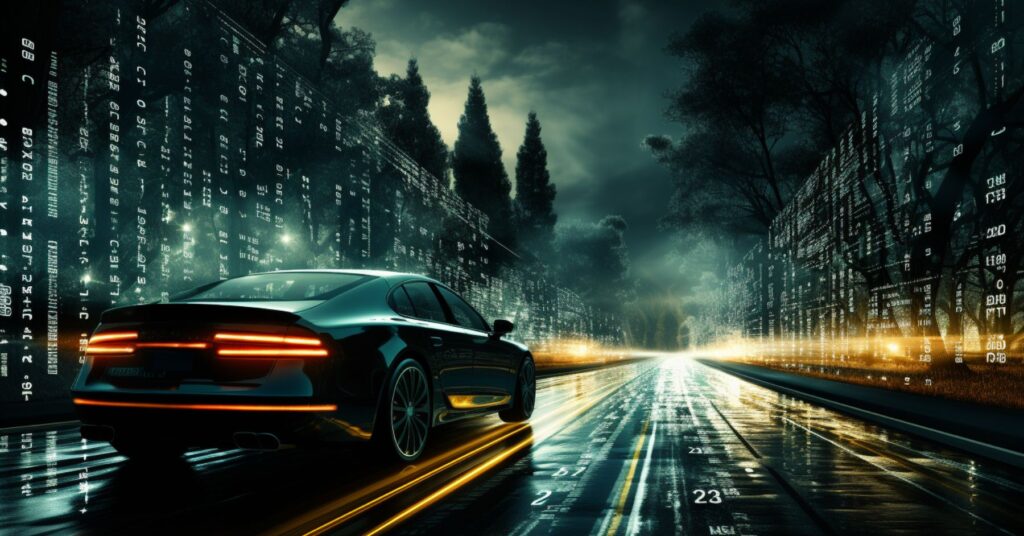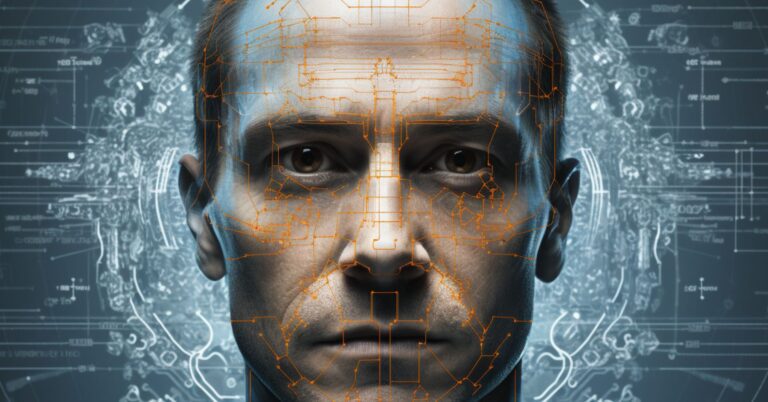Jump to Sections
The Intersection of AI and Law Enforcement: A New Era of Surveillance
AI in traffic surveillance is closer than we think. Rekor, an AI software that analyzes traffic patterns and helps law enforcement, has been used to apprehend suspected criminals. In the bustling town of Scarsdale, New York, David Zayas, a suspected drug trafficker, was caught thanks to the vigilant eyes of an AI system. This is no longer a scene from a futuristic movie; it’s the reality of how AI in traffic surveillance is transforming law enforcement.

Rekor’s AI: The “Roadway Intelligence” Pioneer
Rekor, a trailblazer in AI-driven “roadway intelligence,” lent its cutting-edge software to the New York police, enabling them to sift through a colossal database of information harvested from the region’s roadways. Equipped with an automatic license plate recognition (ALPR) system, the platform boasts 480 cameras scattered across the region. These cameras diligently record data points, from license plate numbers to the make and model of vehicles.
Decoding Suspicious Routes: AI at Work
The real magic unfolds when the software begins its intricate dance of recording and reverse-engineering vehicle trajectories. By doing so, it evaluates whether certain routes raise red flags. In Zayas’ case, his frequent journeys between Massachusetts and specific zones in upstate New York resonated with patterns typical of drug traffickers. The result? Zayas was apprehended, found with a cocktail of incriminating evidence: crack cocaine, a firearm, and a whopping $34,000 in cash.
AI’s Dual-Edged Sword: Potential and Concerns
While the Zayas case, as detailed in gizmodo.com, underscores the transformative potential of AI in traffic surveillance, it also casts a spotlight on the broader implications. AI’s disruptive influence on various sectors is well-documented, but its role in surveillance systems is a relatively uncharted territory. As we stand on the cusp of this new era, it’s imperative for governments worldwide to tread carefully, ensuring that the deployment of such technology is both responsible and regulated, safeguarding against potential misuse.
The Evolution of AI in Traffic Surveillance
Artificial Intelligence has been making waves in various sectors, from healthcare to finance. The application of AI in traffic surveillance is a testament to its versatility. Historically, surveillance was a manual task, relying heavily on human observation. With the advent of AI, the game has changed. Algorithms can now process vast amounts of data at lightning speed, making real-time analysis a reality. This not only enhances efficiency but also accuracy.
Broader Implications: Society and Ethics
The use of AI in traffic surveillance, while promising, brings forth a plethora of ethical concerns. The balance between security and privacy is a delicate one. While AI can undoubtedly aid in crime prevention and detection, there’s a looming fear of mass surveillance, leading to a potential invasion of privacy. As AI systems become more prevalent, it’s crucial for regulatory bodies to establish clear guidelines to prevent misuse.
Expert Opinions on AI in Traffic Surveillance
Dr. Jane Doe, a leading expert in AI and surveillance, opines, “The integration of AI in traffic surveillance is a significant leap. However, it’s essential to ensure that these systems are transparent and accountable.” She further adds, “While the potential benefits are immense, we must tread with caution to ensure that individual rights are not trampled upon.”
The Future of AI in Law Enforcement
The case of David Zayas is just the tip of the iceberg. As technology advances, we can expect AI systems to become more sophisticated, offering even more accurate predictions. This could revolutionize law enforcement, making our societies safer. However, it’s equally essential to ensure that these advancements don’t come at the cost of individual freedoms.
Key Takeaway
- Rekor’s AI-driven “roadway intelligence” platform is revolutionizing law enforcement by analyzing driving patterns to pinpoint suspicious activities.
- The apprehension of David Zayas in New York underscores the system’s efficacy, with AI identifying his routes as typical of drug traffickers.
- While the potential of AI in enhancing surveillance is undeniable, it’s crucial to strike a balance, ensuring its deployment is responsible and well-regulated to prevent potential abuses.



